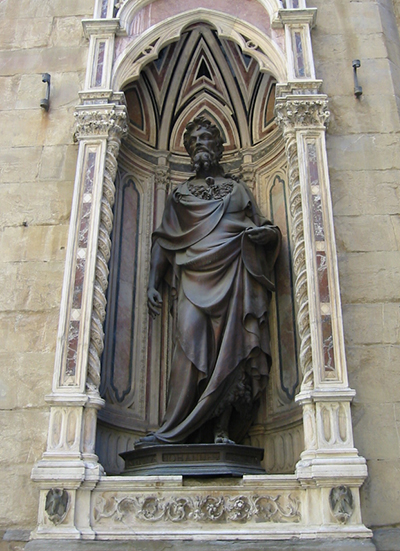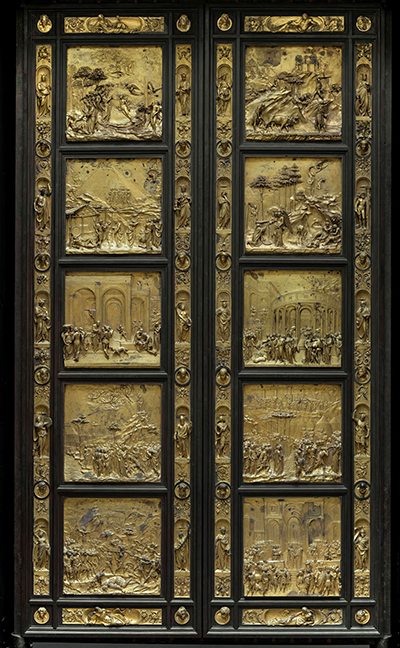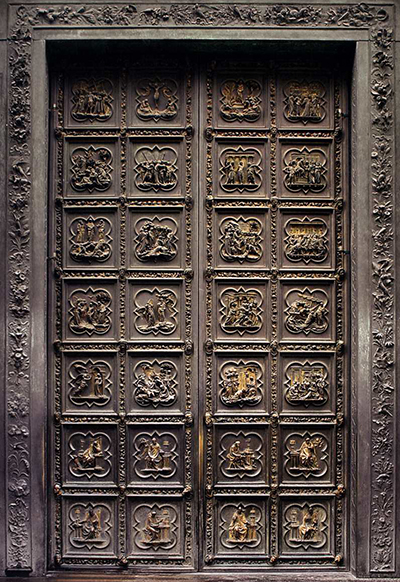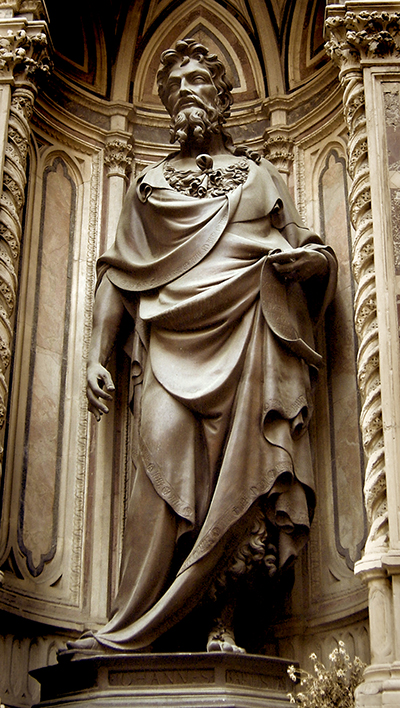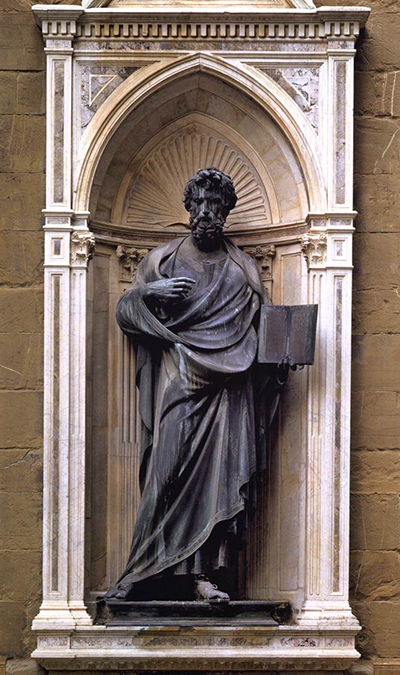Lorenzo Ghiberti's sculptures were the crucial predecessor to those of one of his pupils, Donatello. Some of the master's work was described by Giorgio Vasari as pure perfection.
Art history has always tended to be a succession from one great artist to another, often through the exchange of ideas in studios or through exposure to literature or the artworks themselves. Ghiberti was much more than just an avenue into the career of Donatello, though. His two series of bronze doors remain some of the finest achievements in the early Renaissance and his role in promoting the city of Florence as the spearhead of this movement was crucial.
Ghiberti was not short on confidence, once exclaiming, "...few important things were done in our city which were not devised or designed by my hand...". Desite this, though, he was still willing to collaborate and learn from others, when he considered them to be sufficiently skilled. The likes of Donatello, Paolo Uccello, Michelozzo and Benozzo Gozzoli would also pass through his studio at various points and go on to produce great careers of their own.
Fra Angelico is one of the most respected painters from this period and the two would join forces for the Linaiuoli Altarpiece, with the sculptor providing elaborate designs for its frame. In more modern art forms the frame tends to be somewhat of an after thought but during the Renaissance it was anything but - Jan van Eyck in flemish circles would paint the frame itself at the same time and considered it part of the final artwork.
It has been widely accepted that Ghiberti was an open individual with those he trusted and respected, willingly spreading ideas and opinions. It can be hard to precisely define the impact made by him on others in his studio and how they influenced him but we do know that his studio had an air of friendship and respect with the younger students.
Research and experimentation was a key element to Ghiberti's successful development as an artist. Many of these discoveries and opinions were revealed in his various books but we can also see the changes within his career over time through his art. There was an extended period of time after his initial series of bronze doors in which the sculptor worked intensely on his knowledge and use of perspective. He may also have been influenced by humanist scholar Leon Battista Alberti at this time too.
The sculptures displayed in this page may never have come about were it not for the competition in Florence that would ultimately provide the breakthrough that he needed. Prior to that Ghiberti was also very passionate about painting, fresco art as it would have been then. It he had decided against entering this competition and remained in Rimini instead, perhaps his artistic journey would have taken a very different route. Lorenzo was also known to have enjoyed painting during his apprenticeship from his father, right at the start of his career.
Ghiberti had worked in the Palace of Carlo Malatesta, helping out on several frescoes before his calling came. It is probable that his passion and knowledge of different types of genres ultimately helped his development as a sculptor. The Renaissance itself is a movement particularly well known for multi-talented, ambitious artists who were unwilling to continue in the same vein for too long.



